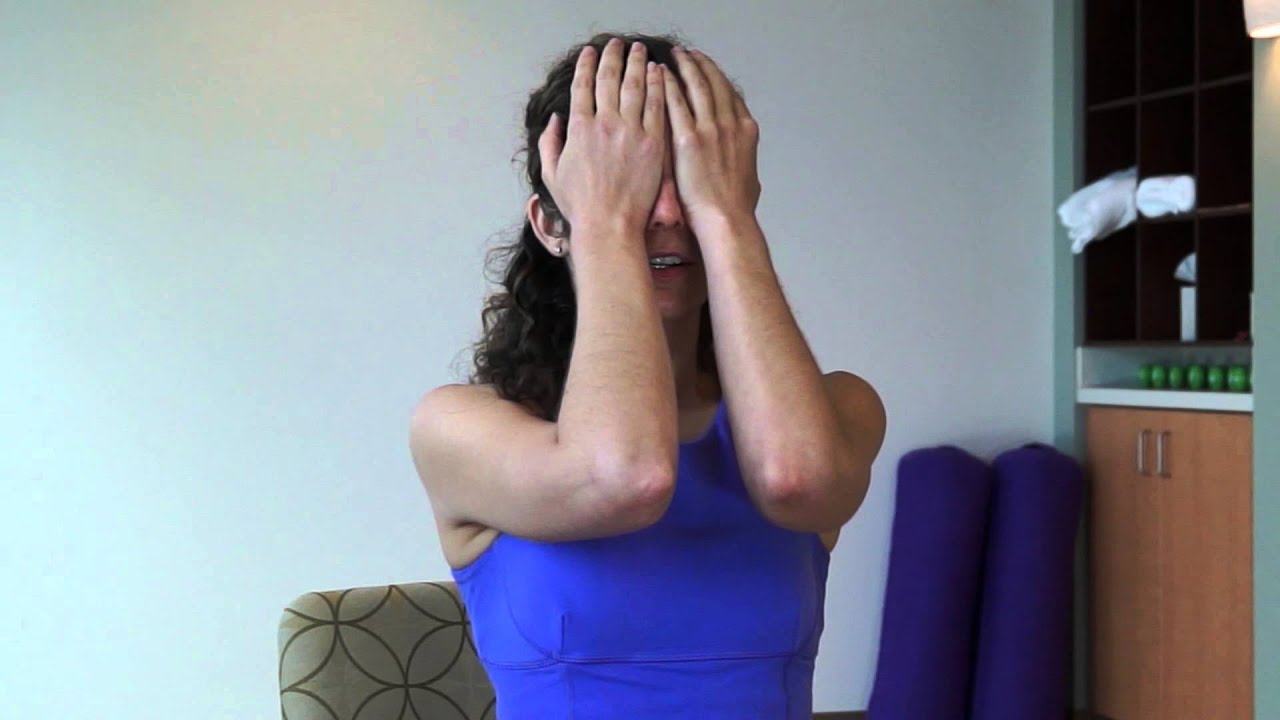In an era dominated by screens, from smartphones to laptops, the phenomenon of eye strain has burgeoned into a pervasive concern. Many individuals experience discomfort owing to prolonged digital exposure, leading to what is commonly referred to as digital eye strain or computer vision syndrome. This condition, however, may not only compromise visual acuity but can also affect psychological well-being and productivity. As such, there is a pressing need for remedies that are both practical and efficacious. Yoga for eye strain relief has emerged as a promising avenue, combining ancient practices with modern challenges.
Understanding the nature of eye strain is crucial to appreciating the impact of yoga on this affliction. The eyes endure significant stress during extended periods of focus, particularly on digital screens. Symptoms may include dryness, irritation, fatigue, blurred vision, and headaches. Addressing these issues requires an integrative approach, incorporating not just fleeting solutions, but lasting practices to enhance ocular health.
Yoga offers a multifaceted approach to alleviate eye strain. It entails not only physical postures but also breathing exercises and meditative practices that foster relaxation. This multifold methodology serves to enhance blood circulation, reduce muscle tension, and foster mindfulness, creating an optimal environment for ocular wellness. This article delves into the various elements of yoga that specifically address eye strain, providing an evidence-based exploration of their benefits.
Understanding Eye Strain: The Biological Mechanism
The human eye is an intricate organ, designed for versatility yet vulnerable to the rigors of modern living. When individuals fixate on screens for protracted periods, several biological mechanisms are activated. The light emitted from screens, primarily blue light, can induce phototoxicity, leading to retinal damage if exposure becomes excessive. Furthermore, reduced blinking frequency while focusing on screens exacerbates ocular dryness and fatigue. Muscles around the eye, particularly the ciliary muscle responsible for lens accommodation, may also become strained, leading to discomfort.
The physiological response to eye strain is complex, often resulting in a cycle of tension and fatigue that can feel insurmountable. Thus, the integration of yoga—especially targeted exercises—can pivotally reshape this experience. By engaging in yoga, practitioners can address both the muscular strain and ocular fatigue that contribute to discomfort.
Breathing Techniques: Cultivating Calmness
Central to yoga practice is the emphasis on controlled breathing, known as pranayama. This practice can exert a profound influence on the body’s physiological state, effectively reducing stress and promoting relaxation. Techniques such as ‘Nadi Shodhana’ or alternate nostril breathing allow for balanced energy distribution throughout the body. This equilibrium can counteract the emotional and physical stress induced by eye strain, fostering a harmonious connection between mind and body.
Moreover, engaging in diaphragmatic breathing can stimulate the parasympathetic nervous system, facilitating relaxation responses. Those experiencing eye strain often report associated stress, which can make symptoms feel worse. Therefore, employing these breathing techniques as a precursor to visual exercises can enhance overall effectiveness by fostering a state of relaxation before engaging the eyes in activity.
Eye Yoga: Targeted Exercises for Relief
Inline with conventional yoga postures, eye yoga enthusiasts perform specific exercises aimed at promoting eye health. Such exercises are designed to combat the negative aspects of prolonged screen time, improving circulation and alleviating discomfort. Simple practices might include:
1. **Palming**: Closing one’s eyes and cupping them with the palms can provide instant relief. The warmth from the palms combined with the absence of light facilitates relaxation and enables the ocular muscles to rest actively.
2. **Focusing Exercises**: The practice of shifting focus between distant and near objects can help engage the ciliary muscles. A common technique is to hold a finger in front of the face and alternate focusing between the finger and an object in the distance.
3. **Figure Eight Movement**: Allowing the eyes to trace the pattern of an imaginary figure eight enhances muscle flexibility and coordination. This exercise can be particularly effective in combating the dryness and fatigue that arise from screen fixation.
4. **Blinking Exercises**: A conscious effort to blink more frequently lubricates the eye, reducing dryness. Taking regular breaks to emphasize blinking—specifically during prolonged screen exposure—can mitigate the symptoms of digital eye strain.
Incorporating these exercises into daily routines can foster improved ocular endurance and comfort, ultimately enhancing quality of life. Practitioners may note immediate relief and progressive enhancement of visual fatigue over time, bolstering their productivity.
Meditation and Mindfulness: A Comprehensive Approach
At the intersection of yoga and eye health lies the practice of mindfulness and meditation. By fostering an acute awareness of one’s surroundings and actively engaging with the present moment, individuals can cultivate a deeper appreciation for their visual experiences. Meditation can serve as an antidote to the overstimulation prevalent in modern digital environments.
Practitioners may engage in visualization techniques, paying attention to colors, patterns, and any discomfort experienced. This not only encourages deeper relaxation but also fosters resilience against distractions caused by external stimuli. Such practices have been associated with lower levels of anxiety, which can directly influence the perception of physical discomfort, including eye strain.
Conclusion: A Paradigmatic Shift in Ocular Health
As the prevalence of eye strain continues to rise alongside advancements in technology, the need for effective solutions becomes increasingly critical. Yoga offers a paradigmatic shift in how one approaches eye health, emphasizing holistic practices that engage both the body and the mind. The multifaceted benefits of breathing techniques, targeted eye exercises, and mindfulness offer a comprehensive toolkit for individuals seeking relief from modern ocular distress.
Integrating these practices into daily life enables individuals to build resilience against the demands of a screen-centric world. The promise of yoga extends beyond mere symptom relief; it heralds a deeper engagement with one’s own well-being. As individuals increasingly embrace these preventative measures, the potential to enhance ocular health and overall quality of life remains boundless. Engaging with these practices may not only alleviate discomfort but cultivate lasting habits that protect visual health for years to come.
